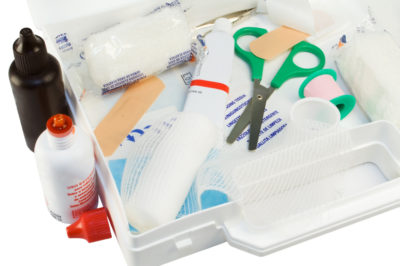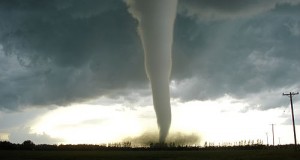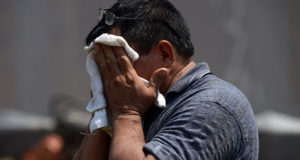A first-aid kit is an absolute necessity when it comes to preppers. You prep because you live in an imperfect world, and once this world crashes bad things are going to happen. Your likelihood of injury is much greater during a crisis and the likelihood of a hospital or a doctor being around is much lower. You have to be prepared for anything.
Now the option is out there to buy some pretty awesome first aid kits off the shelf. There are the basic cheap kits which, believe it or not, can be handy for a few things. These little kits from big box stores are not going to be enough, though. Doing some research, I was able to find some pre-built kits that are extremely impressive. Adventure Medical kits are a great source of first-aid equipment. Buying a kit is a good idea if you’re completely lost when it comes to what you are going to need.
Of course, the option of building a kit allows you to tailor the kit to your area. This can also be a slightly cheaper option, or just an easier-to-afford option. Building a kit allows you to buy a few pieces at a time, which is important when you’re on a budget. Building your own med bag allows you to tailor the kit for accessibility.
In my opinion, the best thing to do is to combine the two methods: Buy a small- or medium-sized kit and begin tailoring it as you see fit. Like marriage, compromise is key. I use a Combat Casualty Response Kit from North American Rescue. I took this kit and added things like a snake bite kit, tick cream, bug repellant, duct tape, glow sticks, and more to customize the kit for the part of Florida I live in.
New Medical Kit Enables Anyone To Administer First Aid Quickly And Confidently.
The following list includes the items I think are either unknown, overlooked or forgotten about for building a proper kit, and for being prepared. These measures are for a general kit and are not a customized kit for different environments. I’ve avoided the most common items because common sense will tell anyone they need Band-Aids and Neosporin.
Story continues below video
- Bug spray. This is definitely preventive medicine. Bug bites are irritating, and besides causing discomfort can carry dangerous diseases. Even if contracting a disease from insects like mosquitoes is rare, bug bites themselves are incredibly discomforting. They can degrade morale, they can make sleeping uncomfortable, and cause massive amounts of misery. Low morale and lack of sleep can affect your senses and lower your guard, which can cause all kinds of bad stuff.
- Trauma shears. A good pair of trauma shears is one of the most overlooked but valuable tools you can have in your med kit. Trauma shears are invaluable for cutting through bandages cleanly, cutting clothes off to access wounds, or even cutting seat belts and straps. Trauma shears are capable of cutting through thick layers of clothing. They shouldn’t be used for tasks like cutting rope or any other materials unless it’s an emergency. They should be spared use for only emergencies. I suggest purchasing multiple pairs, since they can be purchased for less than $10 a pair.
- CAT tourniquets. If you’ve done any time in the military in the last five years or so you’ve seen a CAT tourniquet. CAT tourniquets are being used in the military for their reliability, ease of use, and the fact they can be easily packed away. They can also be applied with only one hand. They have been issued to every deploying service member who is overseas. They are praised by both doctors and trauma medics for saving countless lives.
- Flashlight. This seems odd for your medical kit, I know. You may be saying, I already carry a flashlight in my kit, and actually you probably have more than one. I always advise carrying a flashlight solely dedicated to the medical kit. When you are faced with a bad situation in the middle of the night there is not a doubt that you will have a light handy for treating the wounded. The light should also have a blue lens or bulb, like the Sidewinder series of lights. The blue makes blood glow when shined on it. This makes both light discipline and wound location possible.
- Water purification tablets or drops. If you are injured away from home and away from your preps you could have very little water on you. You or someone in your party may be immobilized for an unknown period of time. Water is essential in the healing process, and of course it’s essential to survival. Water purification drops and tablets are small and easy to tuck away in a med kit and are quite affordable and easily available.
- QuikClot Combat Gauze. This is another relatively new product that many members of the military will be familiar with. Combat Gauze was the result of studies and suggestions by military medical providers. It is a drastic improvement over the old-school QuikClot. There is no burning or heat used with combat gauze, but you receive the same coagulating effects QuikClot had. In fact, the old QuikClot has essentially been weeded out of most military use. Combat gauze works by being pushed into the wound as much as possible. Then pressure, combined with coagulating agent on the combat gauze slows bleeding down drastically. Combat Gauze has been approved and recommended by the Committee on Tactical Combat Casualty Care.
These items may seem unorthodox, but their handiness can’t be denied. These items are often overlooked or unknown to a lot of people. I personally have these six items for each of my medical kits and stored in my individual first aid kit, my truck bag, and my family sized medical bag. Some are more expensive than others — like combat gauze and CAT tourniquets. I suggest paying attention to military surplus sights, as these items do come up from time to time.
The best med kits are the ones you can use. So my last bit of advice is to seek out medical training. Everything from the basic CPR courses offered at YMCAs to tactical medical course if you can afford them. Knowledge is power and won’t add any pounds to your pack.
 Off The Grid News Better Ideas For Off The Grid Living
Off The Grid News Better Ideas For Off The Grid Living





